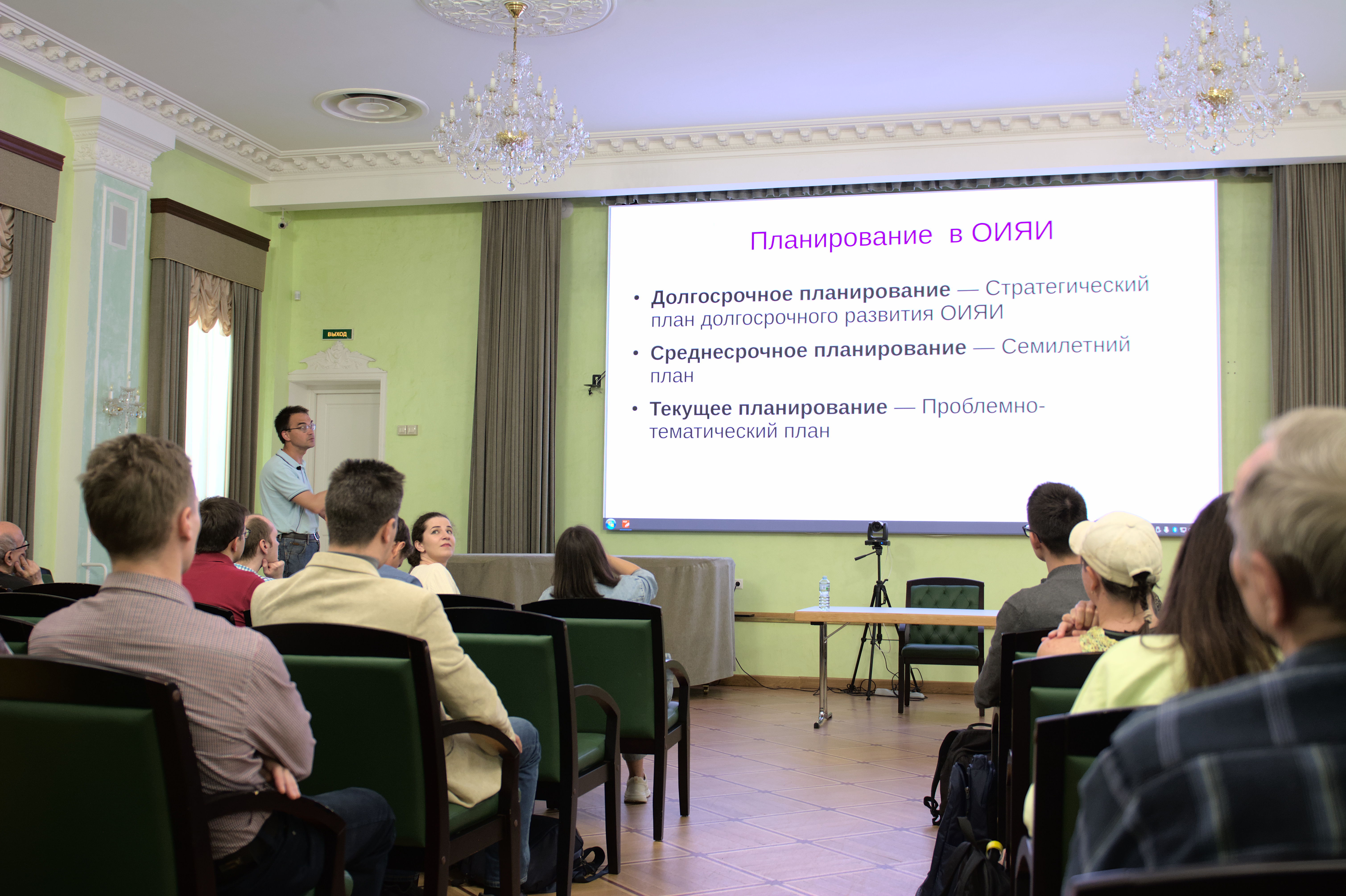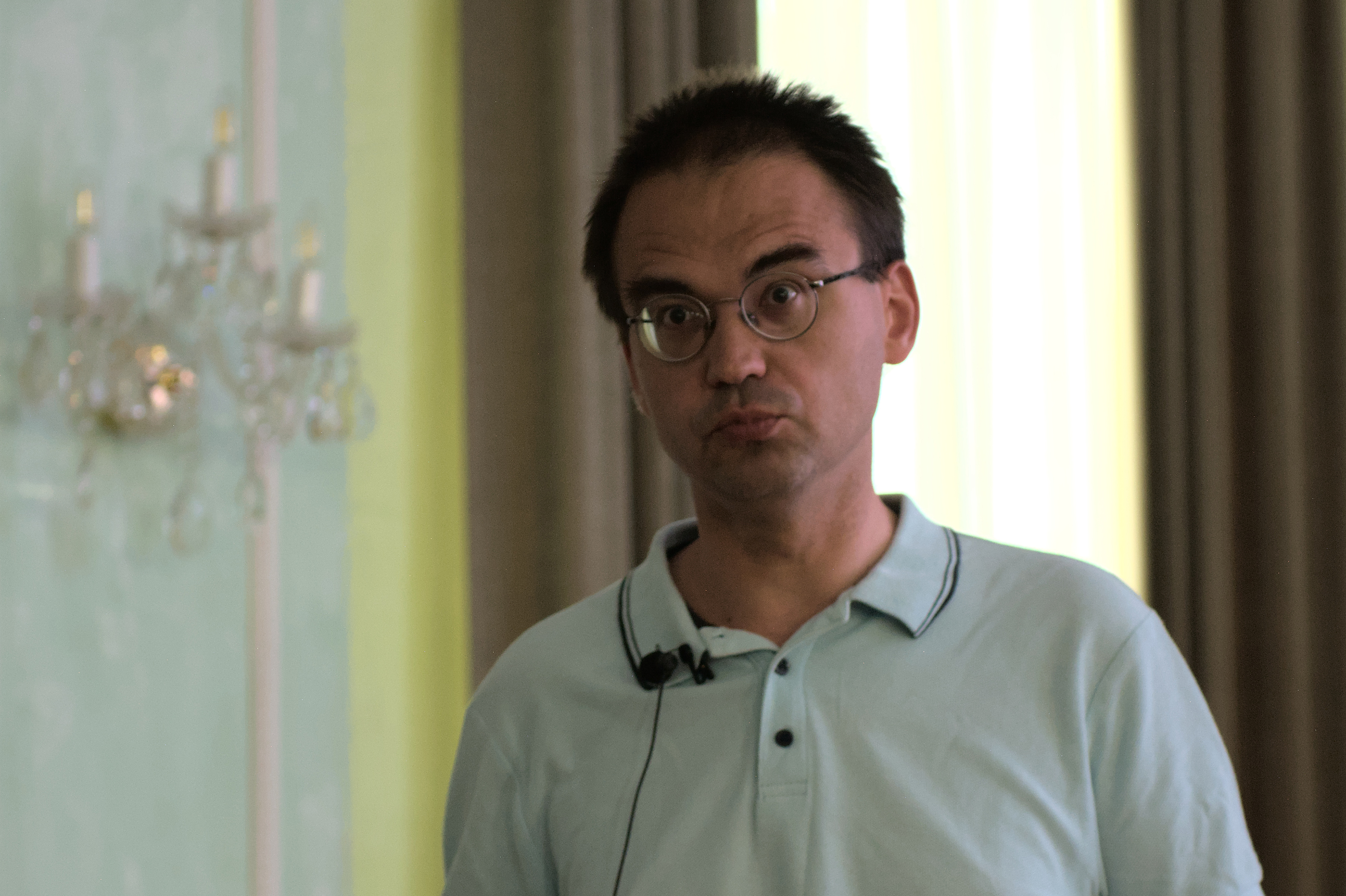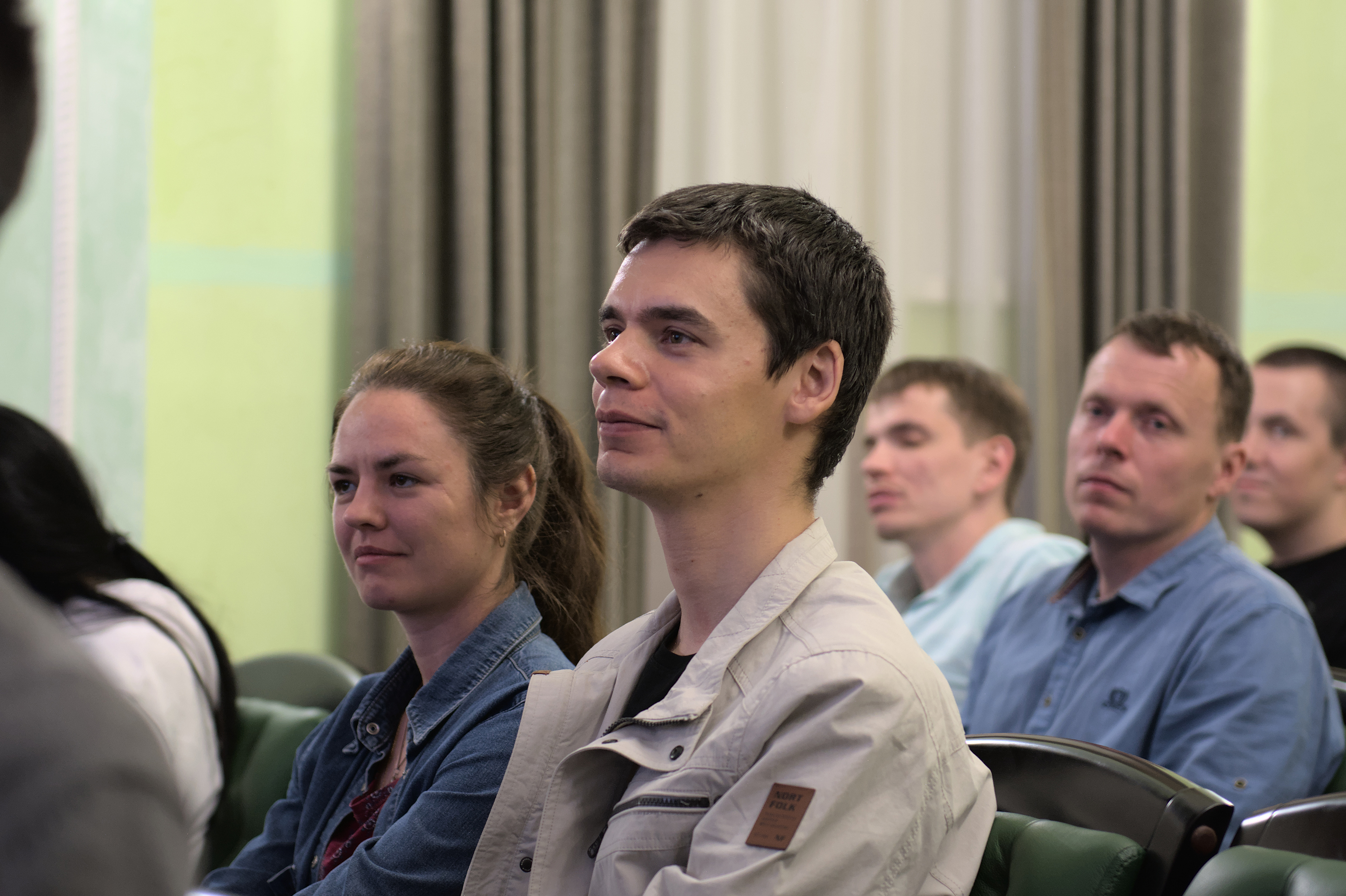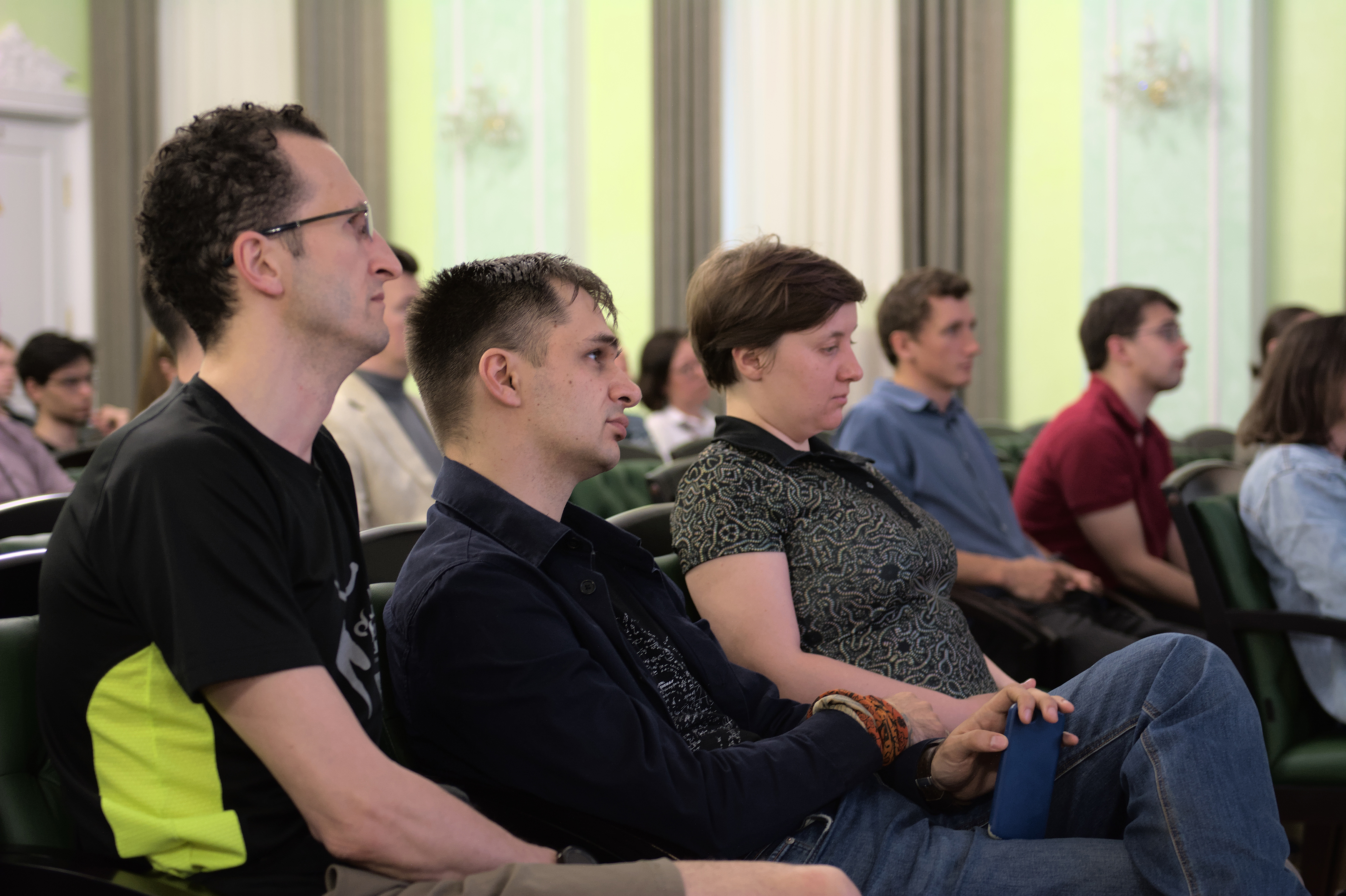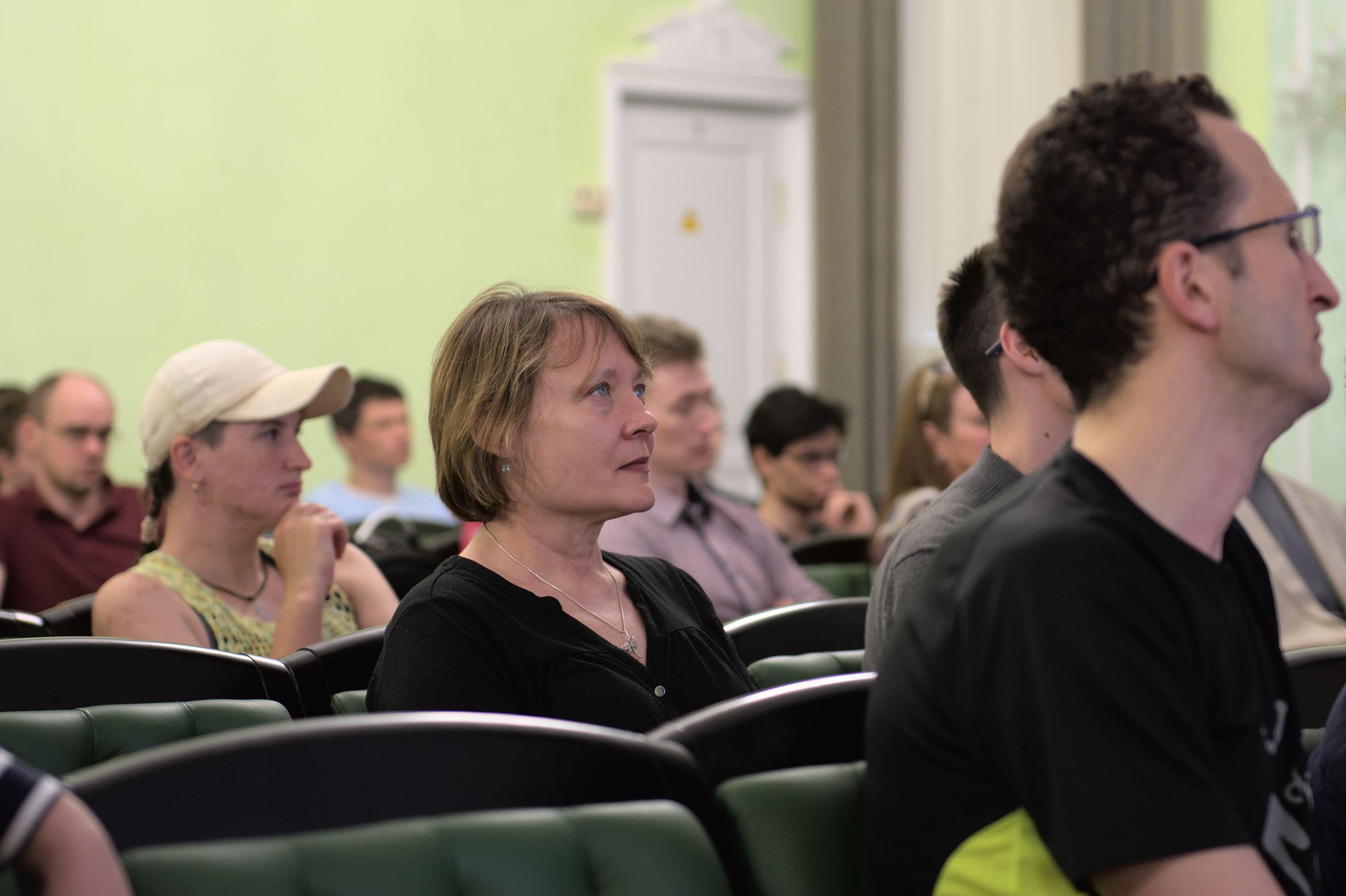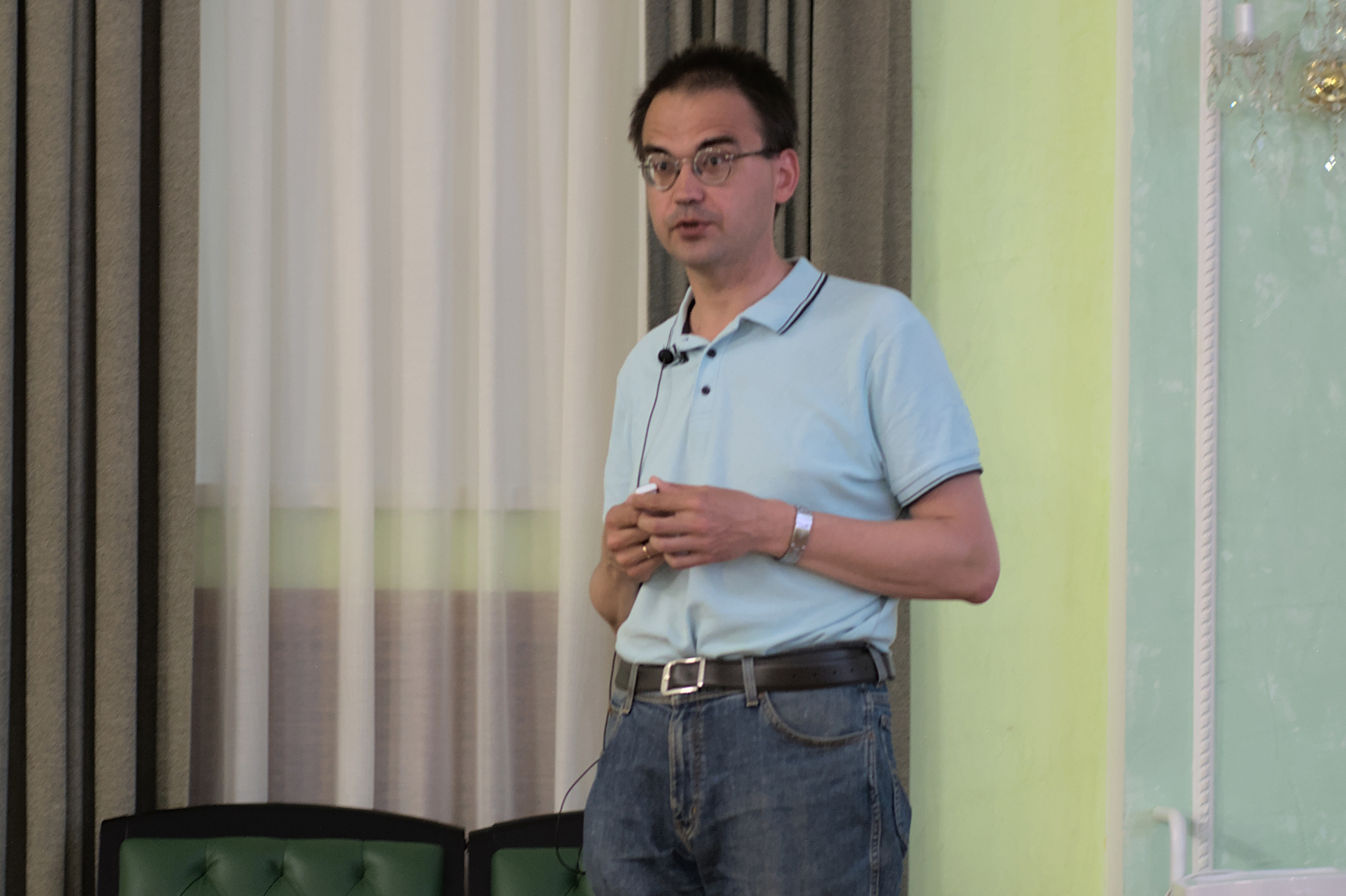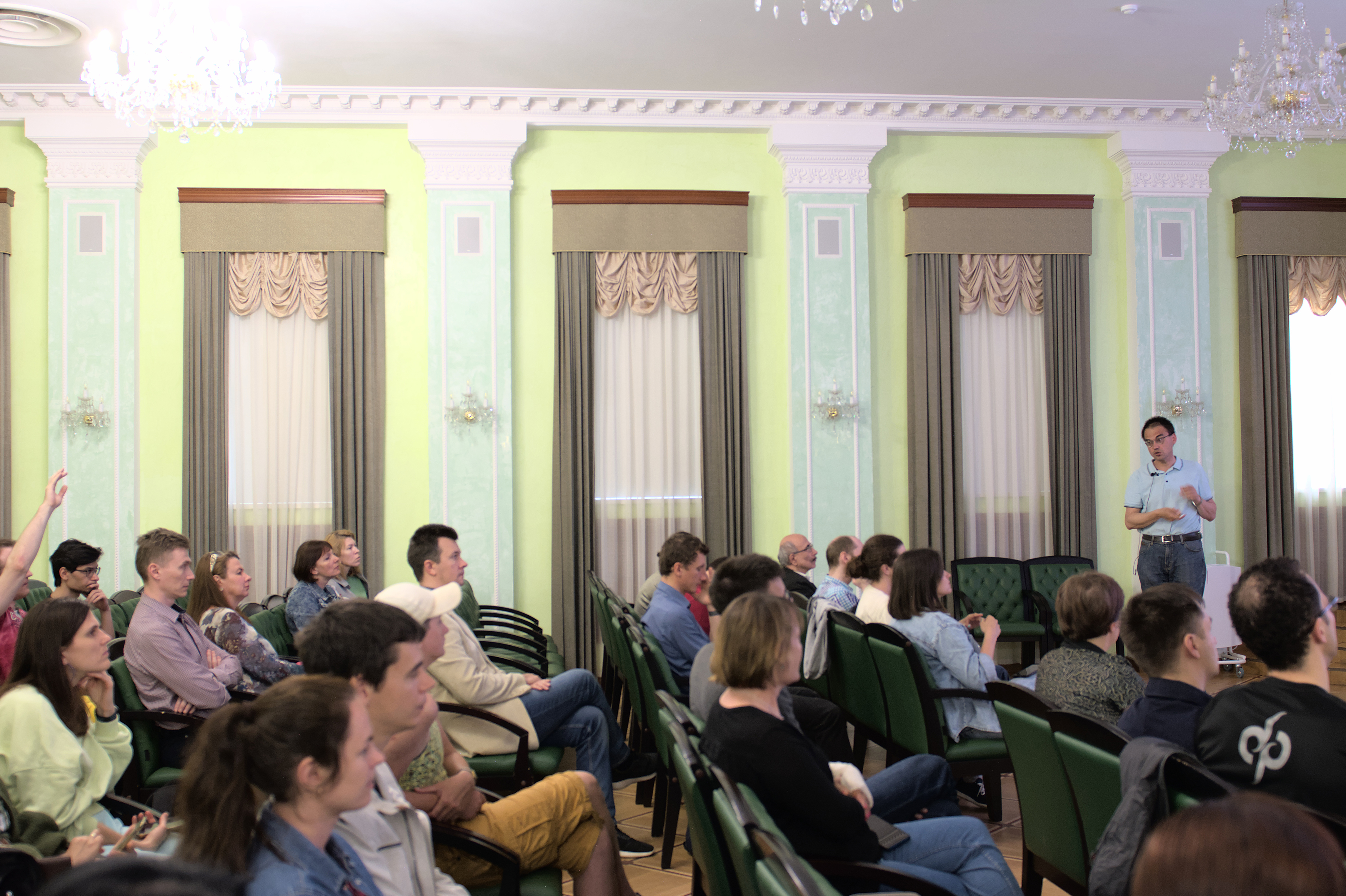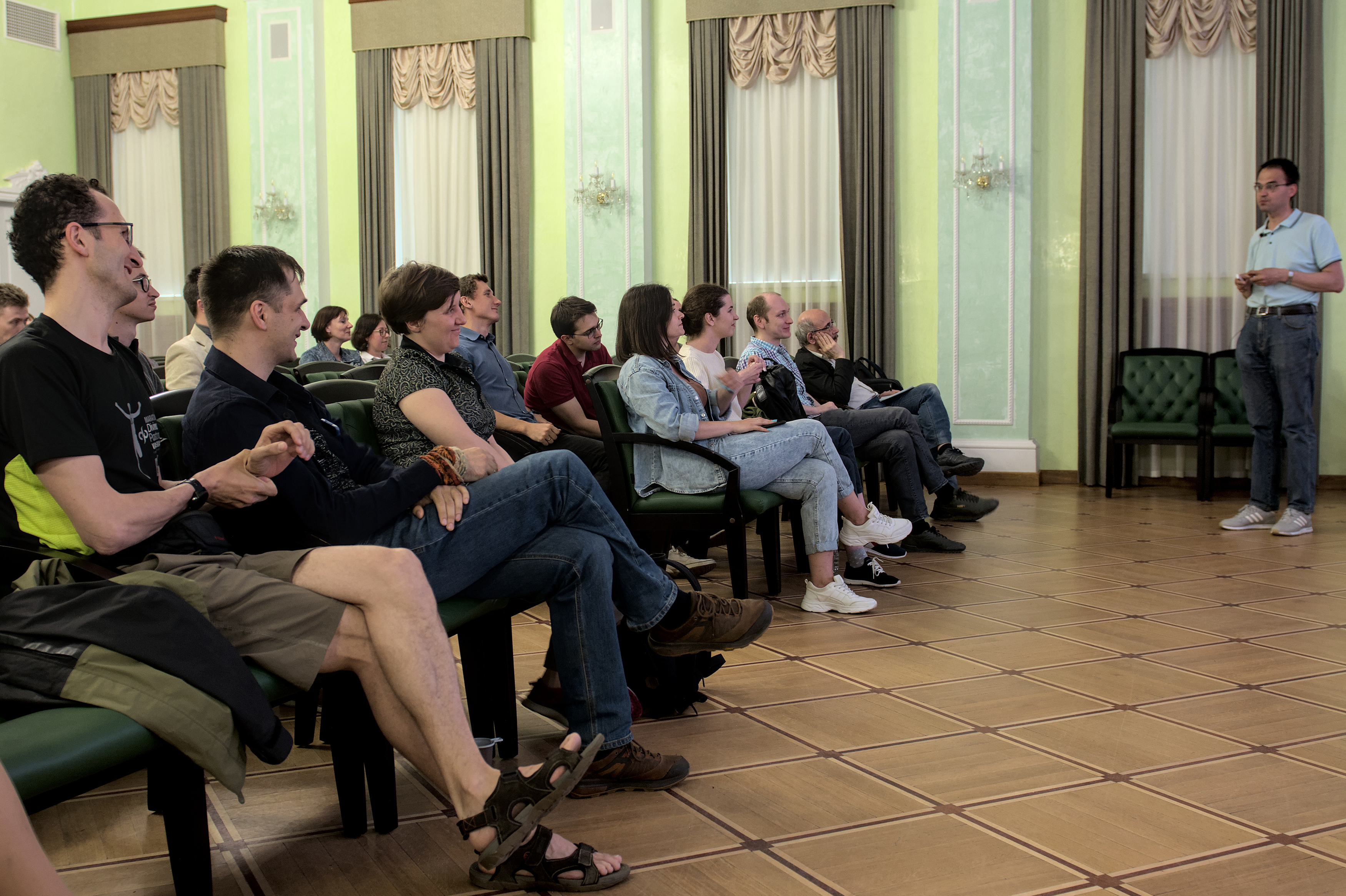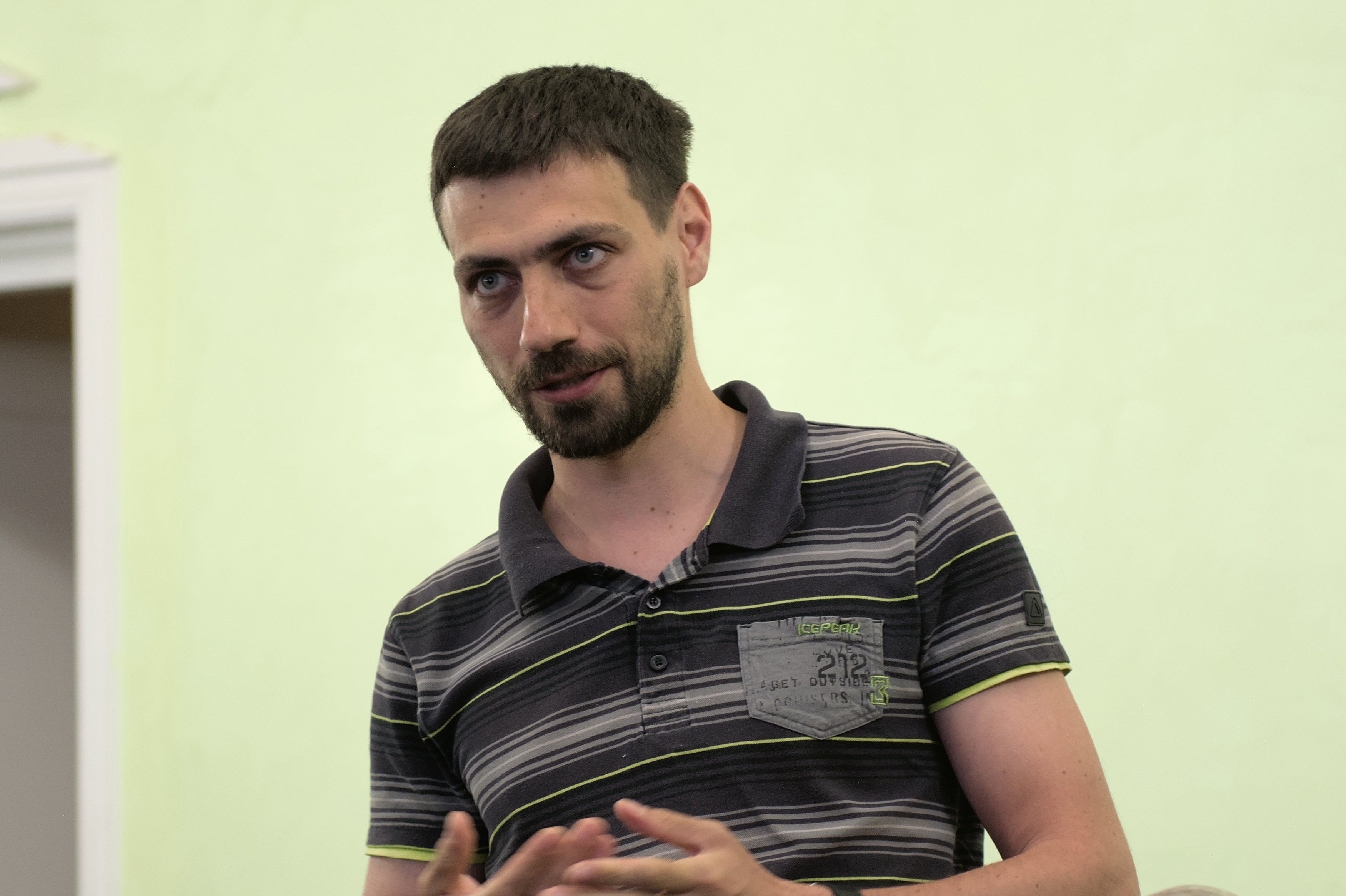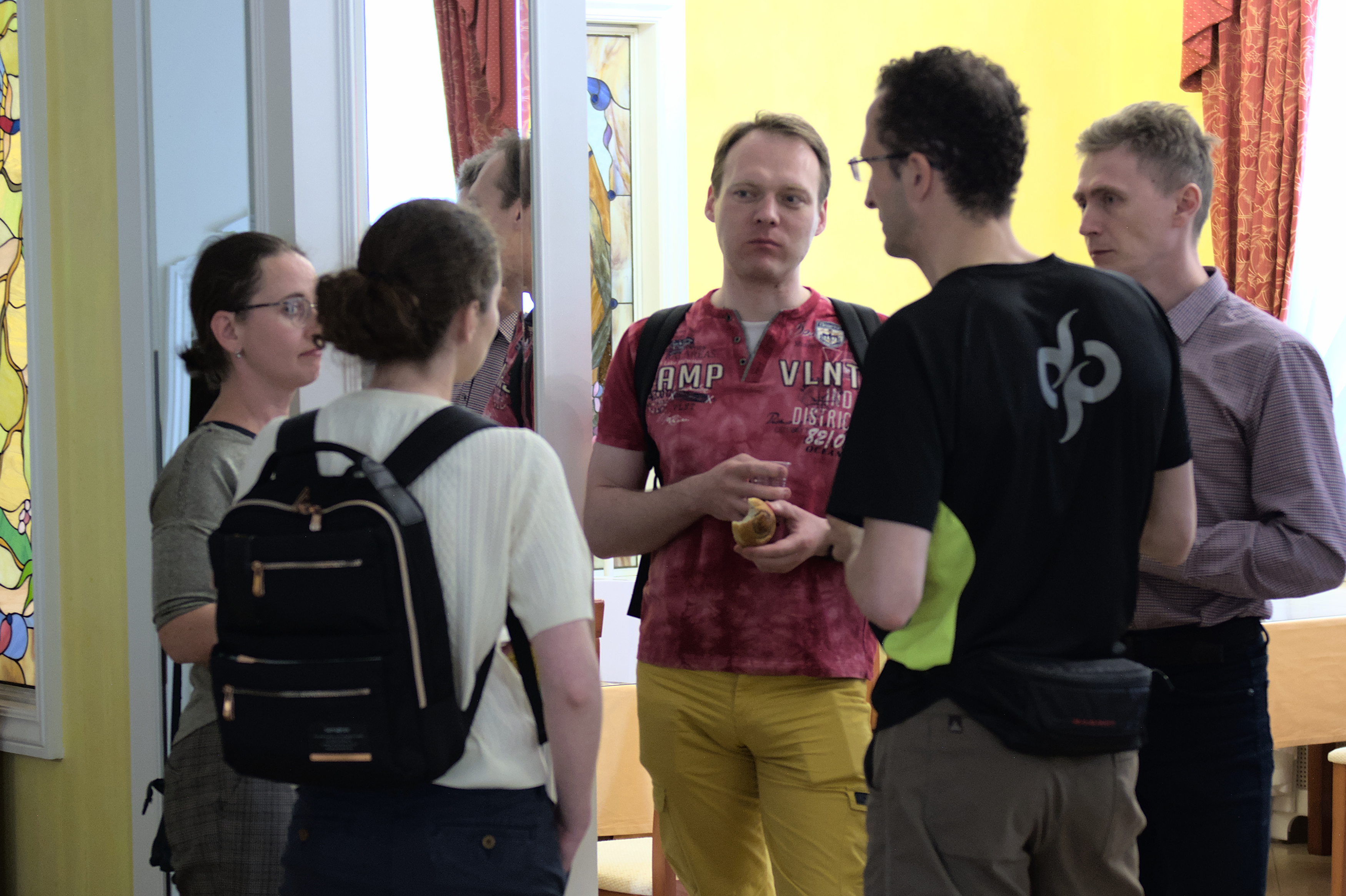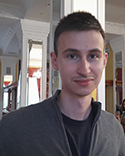Science organization at JINR discussed at AYSS seminar
News, 20 June 2022
On 16 June, a lecture “Organization and planning of scientific research at JINR” by Deputy Head of the Department of Science Organization Activities, Deputy Head of the DLNP department, Candidate of Physics and Mathematics Alexey Zhemchugov continued a series of AYSS seminars in the JINR Scientists’ Club. Foremost, the seminar was addressed to the youngest employees of the Institute. They have got an idea of planning and financing of scientific topics and projects, as well as work organization of the Governing and Advisory Bodies of the Institute.
As a rule, participants of AYSS seminars discuss scientific achievements and successes. However, this time, the seminar was devoted to purely practical issues. There were two reasons for such a presentation: the audience was interested in learning more about the JINR organizational structure, as well as what nuances should be taken into account before submitting for a grant.
“Young scientists have asked me this question many times. Participants of the Summer School “Lipnya-2021” tried to discuss this issue last year. It is not easy for all young scientists to understand the structure formed at JINR. When you get a job, you receive your task, you are engaged with it, and do not pay much attention to other things. However, when young scientists immerse themselves in the administrative part of the issue, it turnes out that not everything is clear enough. The Institute has the Topical Plan, certain Governing Bodies, flags are hung out in honour of big events – why it is necessary, how it works. All this is not always obvious to junior researchers. That is why it is necessary to talk about it in plain language,” Alexey Zhemchugov commented.
In his report, he presented information about what a scientific project includes, what stages of coordination, implementation, and reporting it goes through. Thus, the preparation of a scientific project starts with its writing, then, it involves passing an examination at different levels: the STC of a Laboratory, the Programme Advisory Committee for the scientific direction, the JINR Scientific Council. For large projects, additional and/or external expertise is involved. The project is approved by the Directorate (included in the Topical Plan for the year and in the annual budget), and then, it is discussed at a session of the Committee of Plenipotentiaries. The annual report of the laboratory confirms the project implementation. In turn, the final report is approved at the STC of the laboratory and the PAC for the scientific direction.
The lecturer said that the most important documents relating to planning the development of the Institute are the JINR Long-Term Development Strategic Plan, the Seven-Year Plan, and the annual Topical Plan, which, ultimately, includes all scientific projects of the staff.
Alexey Zhemchugov highlighted that JINR has a matrix organization. On the one hand, it includes an official administrative division into departments, groups, sectors, laboratories. On the other hand, it supposes a division into scientific topics and projects. Alexey Zhemchugov specified the difference between a scientific project and a topic of the TP. First of all, a topic is a way of planning the budget, it can include several projects. Large topics represent one basic facility or a theme (for example, computing). Topics of the TP are rarely completed and replaced by new ones since the duration of many experiments in high energy physics is up to 10 – 15 years and longer.
The speaker talked about the expenses of the Institute’s budget and the difference between science planning in the USSR years and modern times. The following question aroused the audience’s interest: why was there the Five-Year Plan for the Development of JINR during the Soviet years, and it is customary to make the Seven-Year Plan now? The speaker associated it with the fact that now it takes, as a rule, more than 5 years to construct a new experimental facility at the Institute.
How is the international collaboration of scientists legally presented? What does it mean to see your last name in a topic of the Topical Plan? Where do the project funds unused by a team of employees until the end of the year go? Why is it necessary to write a scientific article before submitting a grant application? Answers to all these questions were discussed in detail at the seminar.
Some questions from the audience were “acute”: why are there practically no women among the leaders of scientific topics of the TP? Why do the same people, as a rule, become leaders of topics from year to year? Is it possible to combine both an administrative post of the head of a department and be the scientific leader of a topic or a project? Thereon, Alexey Zhemchugov said that there is some failure in alternation of generations of scientists at the Institute: in the 90s, many young scientists had to leave for foreign research centres or change their occupation, and therefore it often turned out that scientific leaders had no one to raise as a replacement for themselves. “I really hope that future leaders of topics and projects are sitting here,” the speaker added.
Alexey Trifonov, a young DLNP scientist, has heard many useful things for himself at the seminar.
“Alexey Sergeevich has highlighted several times that all this information can be found on the JINR website or on some other resources: you will have to search for something yourself, open documents, download and read them. It can take a lot of time and, as he accurately noted, a few people will do it. In this report, he has perfectly systematised information, which is in fact publicly available, but it has been fully presented and reported in structured language, in such an interesting format organized here by AYSS,” Alexey shared his impressions.A coffee break was organized for those who wished before and after the seminar. In total, the seminar gathered about 60 listeners.
